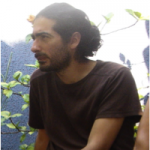Link to Pubmed [PMID] – 19819933
Link to DOI – 10.1093/cercor/bhp198
Cereb Cortex 2010 Jun; 20(6): 1332-40
There is increasing evidence that children with autism spectrum disorder (ASD) have age-related differences from controls in cortical volume (CV). It is less clear, however, if these persist in adulthood and whether these reflect alterations in cortical thickness (CT) or cortical surface area (SA). Hence, we used magnetic resonance imaging to investigate the relationship between age and CV, CT, and SA in 127 males aged 10 through 60 years (76 with ASD and 51 healthy controls). “Regional” analyses (using cortical parcellation) identified significant age-by-group interactions in both CV and CT (but not SA) in the temporal lobes and within these the fusiform and middle temporal gyri. Spatially nonbiased “vertex-based” analysis replicated these results and identified additional “age-by-group” interactions for CT within superior temporal, inferior and medial frontal, and inferior parietal cortices. Here, CV and CT were 1) significantly negatively correlated with age in controls, but not in ASD, and 2) smaller in ASD than controls in childhood but vice versa in adulthood. Our findings suggest that CV dysmaturation in ASD extends beyond childhood, affects brain regions crucial to social cognition and language, and is driven by CT dysmaturation. This may reflect primary abnormalities in cortical plasticity and/or be secondary to disturbed interactions between individuals with ASD and their environment.

